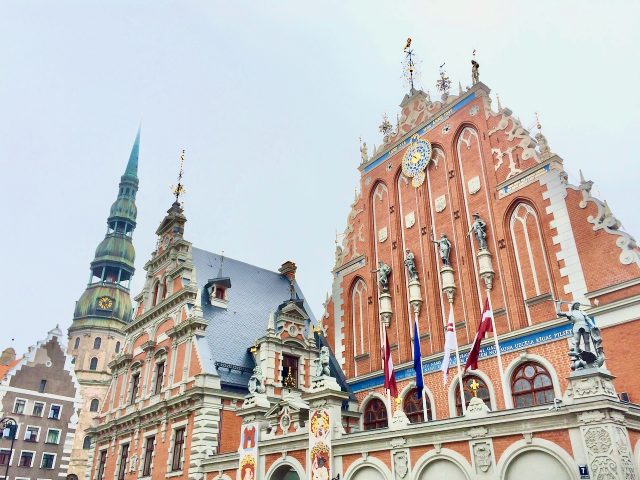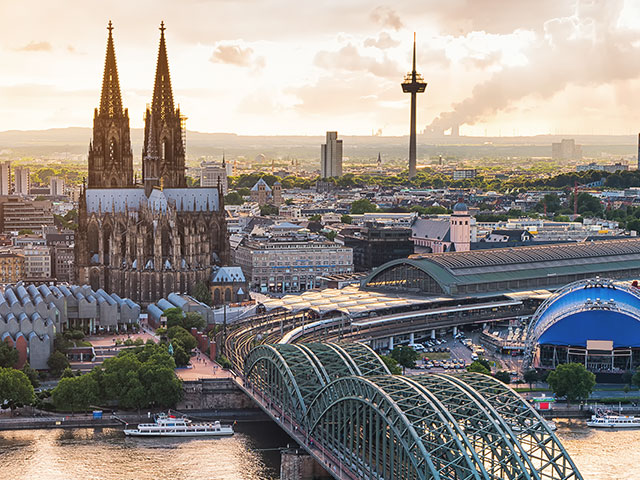 Rustavi ( რუსთავი in Georgian, Рустави in Russian) is
a 128,680
inhabitants city by river Kura, in the southeastern part of Georgia.
It's the capital and biggest town of the administrative region of Kvemo Kartli, being the 4th largest city in the whole country too. It was dominated by the Rustavi Metallurgical Plant and the fall of the Soviet Union in 1991 proved disastrous, causing the collapse of the local economy.
Rustavi ( რუსთავი in Georgian, Рустави in Russian) is
a 128,680
inhabitants city by river Kura, in the southeastern part of Georgia.
It's the capital and biggest town of the administrative region of Kvemo Kartli, being the 4th largest city in the whole country too. It was dominated by the Rustavi Metallurgical Plant and the fall of the Soviet Union in 1991 proved disastrous, causing the collapse of the local economy.
How do I arrive to Rustavi?
Rustavi isn't bad connected with other towns in Georgia and neighbouring countries.
- Train:
there are trains that reach Rustavi before arriving to Tbilisi, most of them coming from Azerbaijan.
- Bus: there are marshutkas from places like Tbilisi (aprox. 1 hour) or destinations in Azerbaijan. There are also buses to Davit Gareji Monastery Complex from Gardabani (aprox. 45 minutes) and from Tbilisi (aprox. 2.5 hours) from Apr to Nov.
- Car:
if you rented a car, from Rustavi it can be reached Abastumani (aprox. 35 minutes), Tbilisi (aprox. 1 hour), Marneuli and Mtskheta (aprox. 1 hour 10 minutes), Tbilisi National Park (aprox. 1 hour 15 minutes), Davit Gareji Monastery Complex (aprox. 1 hour 20 minutes), Sighnaghi and Telavi (aprox. 1
hour 45 minutes) or Algeti National Park (aprox. 2
hours 10 minutes). It could also be reached from Qazax
(aprox. 1.5 hours), Ağstafa (aprox. 1 hour 40 minutes), Tovuz (aprox. 2 hours), or Ganja (aprox. 3 hours 30 minutes)
in Azerbaijan.
History
In the Georgian Chronicles, the foundation of Rustavi is connected to Kartlos (eponymous ancestor of Georgians), being among those castles which opposed Alexander the Great's army (though it's proved that Alexander has never invaded Iberia). It could be assumed that Rustavi had been founded around in the 5th–4th centuries BC. During the reign of Vakhtang I of Iberia (5th century) Rustavi took an important part in the political life in Kingdom of Iberia. Then Rustavi belonged to Principality of Kakheti, whose ruler Kvirike III the Great would install a duke in Rustavi. After Kvirike's death, Kakheti (and therefore Rustavi) was temporarily annexed to the Kingdom of Georgia. After Seljukid invasions of Georgia, allied forces took Tbilisi and Rustavi and gave it to Emir of Tbilisi. During that time Rustavi saw decline but during the anti-Seljuk campaigns led by David IV, Rustavi played an essential role in securing Georgia's southern boundaries. The city was finally destroyed after Timur's invasion. Rustavi was rebuilt as a major industrial center during the Soviet era as part of Joseph Stalin's accelerated industrialization process (included on the Tbilisi-Baku railroad line), many people from all over Georgia came to work here, and it became a key industrial centre for the Transcaucasus region. The core of the industrial activity was the Rustavi Metallurgical Plant, to process iron ore from nearby Azerbaijan. German POWs who were captured in World War II were enlisted to build the city of Rustavi. The fall of the Soviet Union in 1991 proved disastrous for Rustavi, collapsing the economy of the city. Most of its industrial plants were shut down and 65% of the city's population became unemployed (bringing high crime and acute poverty).
What can I visit in Rustavi?
These are Rustavi's main attractions:
Rustavi Steel Mill:
industrial complex founded in 1948 as the first fully integrated metallurgical complex in the South Caucasus and today is still one of Georgia’s largest industrial enterprises. It produced steel, hot-rolled seamless pipes and various products made of pig iron, aluminium or iron. After the fall of the Soviet Union the production at the plant was stopped (and almost shut down in 1999), but today a major program of investment and re-structuring is on the way, using new technologies and equipment.
- Rustavi City Hall: city hall with a new designed forecourt and the bronze orchestra group. It's in the middle of Kostava street.
- Rustavi History Museum (10-18 Tue-Sun; 1₾/ 0.50₾
adults/ students): museum that houses objects discovered in archaeological expeditions in Rustavi and its historical area from 1800 BC up to the 18th century AD. Some of the objects on display are glassware, weapons; or bronze, silver and gold adornments.
- Park of Culture and Rest: park at the junction of old and new Rustavi that has the best recreation area of the city. It has an open anphitheater and a small artificial lake too.
- Rustavi Fortress: fortress that was first built in the 5th-8th centuries, being the only fortress in Georgia with frescoes. It was one of the fortresses built around Tbilisi to protect the capital.
- Rustavi Sioni Church: Georgian Orthodox church built between 2000 and 2011, whose architectural style is based on the Georgian church buildings from the 11th to 12th centuries according to traditional customs.
- Outside the center of Old Rustavi there's New Rustavi, a district full of Soviet-era architecture and parks. Its center is located around Friendship Square, where is located Shota Rustaveli Monument. It's a nice area to explore and discover some colourful Soviet architecture while having a walk or sit for a coffee. This part of the city has a WW2 memorial too.
 |
Rustavi Metallurgical Plant Headquarters
|
 |
Soviet architecture in New Rustavi
|
 |
Red Bridge
|
Rustavi is the main way to connected Georgia with Azerbaijan. On that way the visitor can stop in some places such as Gardabani (გარდაბანი in Georgian, Qarayazı in Azeri), a 10,753 inhabitants town that is 13 km far from Rustavi. The importance of the former industrial town is due to its thermal power plant (that provides most of the energy of Tbilisi) and for being one of the main centers of the Azeri population in Georgia, as it can be seen on its market. In the border between Georgia and Azerbaijan it can be found a border crossing bridge over river Khrami, the Red Bridge. Its origin dates back to the 12th century, although most of its current red-brick structure is mostly from the 17th century.
.jpg/1280px-David_Gareja_(9461056110).jpg) |
Davit Gareji Monastery Complex
|
Rustavi is usually visited as a stop in the way from Tbilisi to one of the most remarkable historic sites of Georgia, Davit Gareji Monastery Complex
(30 km far from Rustavi). This ancient and unique monastery complex
uniqueness is surrounded by a semidesert landscape, the border between
Georgia and Azerbaijan, and it's preserved in a neglected state. The
site often causes peaceful diplomatic troubles between both countries
because some parts of the complex are located in Azeri territory (around
166 km of the border aren't delimitated). The complex was founded in
the 6th century by David Garejeli, one of the Thirteen Assyrian Fathers,
and it comprises about 15 monasteries spread over a wide area. Lavra Monastery
has been restored since Soviet times (currently inhabited by monks
again), with buildings from many periods. Inside the church you descend
to a courtyard with the caves of Davit and his disciple Lukiane, and the
6th century cave church Peristsvaleba (where Davit’s tomb sits). Udabno Monastery
consists on a series of cave-hewn chapels and, although many are ruins,
some contain fascinating frescoes painted in the 10th to 13th
centuries. The most impressing caves are the Annunciation Church (cave
42), and St. George’s Church (cave 41). From the top of the complex there are also great views of Kakhetia and Azerbaijan.
Where can I eat in Rustavi?
Rustavi doesn't have a large culinary offer but there are still some places where
eating in a good way like the cafe Askili [ასკილი] (Aleksandre Pushkin 2) or the Ukrainian restaurant Ukrainka (Rustavis Autobazroba).
 Rustavi ( რუსთავი in Georgian, Рустави in Russian) is
a 128,680
inhabitants city by river Kura, in the southeastern part of Georgia.
It's the capital and biggest town of the administrative region of Kvemo Kartli, being the 4th largest city in the whole country too. It was dominated by the Rustavi Metallurgical Plant and the fall of the Soviet Union in 1991 proved disastrous, causing the collapse of the local economy.
Rustavi ( რუსთავი in Georgian, Рустави in Russian) is
a 128,680
inhabitants city by river Kura, in the southeastern part of Georgia.
It's the capital and biggest town of the administrative region of Kvemo Kartli, being the 4th largest city in the whole country too. It was dominated by the Rustavi Metallurgical Plant and the fall of the Soviet Union in 1991 proved disastrous, causing the collapse of the local economy.


.jpg/1280px-David_Gareja_(9461056110).jpg)








 23:54
23:54
 Banknotemaniac
Banknotemaniac
 Posted in:
Posted in: 


.jpg/800px-%E1%83%9B%E1%83%90%E1%83%A0%E1%83%98%E1%83%9D%E1%83%9C%E1%83%94%E1%83%A2%E1%83%94%E1%83%91%E1%83%98%E1%83%A1_%E1%83%97%E1%83%94%E1%83%90%E1%83%A2%E1%83%A0%E1%83%98_(%E1%83%A1%E1%83%90%E1%83%90%E1%83%97%E1%83%98%E1%83%90%E1%83%9C%E1%83%98_%E1%83%99%E1%83%9D%E1%83%A8%E1%83%99%E1%83%98).jpg)




.jpg)

.JPG/800px-St_Gevorg_Armenian_church_in_Tbilisi_(interior).JPG)










_cropped.jpg/800px-Dzveli_Tbilisi%2C_Tbilisi%2C_Georgia_-_panoramio_(37)_cropped.jpg)


.jpg/1280px-2014_Tbilisi%2C_Cerkiew_Metechi_(04).jpg)




.jpg/800px-2014_Tbilisi%2C_Sob%C3%B3r_Tr%C3%B3jcy_%C5%9Awi%C4%99tej_(16).jpg)



.jpg)

.jpg/1024px-Baths_-_panoramio_(2).jpg)




